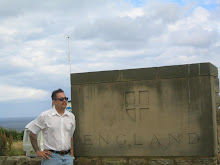The laws governing hours to run (drive) are in place to protect the motoring public. The main lobby influencing these laws is called PATT (Parents Against Tired Truckers). This organization was started after a trucker fell asleep at the wheel and killed a family in N.J. This organization influenced the D.O.T. to establish extremely strict guidelines about hours to run and work, which if violated, are not only massive fines, but criminal offences. The image of the speed-taking , wired and frazzled truck driver was, as all generalizations are, somewhat based in truth. There are currently 3 laws which dictate the hours of running (driving) and working (time spent doing things related to the job and driving). In order to understand these laws you have to understand the basics of how hours are recorded in the driver's log book (the standard legal book that every truck driver literally records every minute of his life, regardless of if he's working, sleeping or on vacation). I will explain the rules in their order of importance. In other words, these rules trump each other in this order: The 70 hour rule. This rules states that a driver can work no more than 70 hours in a week. In the logbook there are 4 lines of a driver's status. These are: driving, on-duty/working, sleeper berth and off duty. The second rule in importance is the 14 hour rule. This rule states that a driver can only work 14 hours in one day (24 hour period). The third rule is the 11 hour rule. This rule states that one can only drive for 11 hours in one day.
In the morning when you release the brakes of the truck your 14 begins. No matter what happens, 14 hours from this point the truck must be stopped for 10 hours. The company knows this through the Qualcomm, which tracks everything about the truck, including idle time, how many times the driver braked, speed and location of the truck at all times within 10 feet. During the day the driver has 11 hours with which to drive. These 11 hours do not have to be consecutive but nu st be within the 14. The driver has 70 hours in a seven day period in which to comply with the 14 and the 10 every day. When the 70 hours are used up the driver must the take a 36 hour restart. The restart or reset as some drivers call it, starts the countdown all over again. Most drivers use this restart as the time at the house. All of this information is immediately available to the police or D.O.T. by looking at the driver's logbook. The status of the logbook must be updated at each change of duty. Lets say the driver pulls into a truck stop to fuel the truck. He will go from line 3- driving to line 4- working. Then he takes a quick 1 hour nap; he then goes from line 4 to line 2-sleeper berth.



